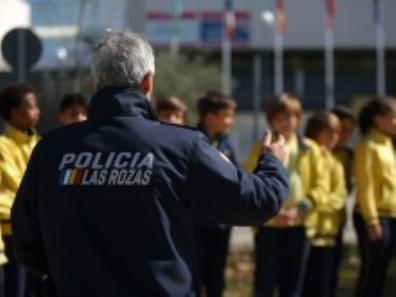

The most effective prevention measures
Nobody questions that it is better to prevent than to remedy; but what are the most effective prevention measures in the world of comprehensive security? At AES they point out that strategy, technical means and organisation have to be combined, whereas ADSI adds that employee awareness is as important as physical and electronic tools. ASELF also points out specific training and the proper use of personal protective equipment, and ANETVA, a good prior risk assessment. In the police sector, a good example of prevention is the plan that the Local Police of Las Rozas (Madrid) just implemented, to guarantee safety for the school community.
For Eduard Zamora, president of the Asociación de Directivos de Seguridad Integral (ADSI), the most important job of a safety director is prevention. “An activity that leads to preventing crimes from happening, providing means to reduce the chances, minimise the loot and increase the possibility of arresting the criminal”. And for this “the organisational means and raising employee awareness is as important as the physical-electronic means”.
According to Zamora, many crimes happen because the staff does not comply with regulations or because they are not aware of how to proceed to minimise risks. Therefore, the most important preventive measure is to regulate procedures, as well as to provide the necessary training and information for everyone who must apply them.
After the organisational steps, “we have the physical-electronic means necessary to minimise the risk of materialisation, with the peculiarities and specialisation required by each activity, along with the risk assessment of the activity”.
New challenges
Manuel Sánchez Gómez-Merelo, member of the board of AES (Spanish Association of Security Companies), explains that the proposal for the security project, which includes prevention and protection, is derived from the initial study of the risks, threats and vulnerabilities. “In this basic layout, the study for prevention is the main chapter, along with the security culture and policy, which should be given the main role and the most resources”. Within this context he states that “the comprehensive security market provides new challenges and demands that the professional and industrial sector can cover with technology, efficiency and effectiveness”.
Pablo Gárriz, president of the Asociación Española de Lucha contra el Fuego (Aself), says that “those of us who participate in the operational and technical area of fire safety, emergency management and citizen protection are aware of the double responsibility that we bear because, on the one hand, we must protect the lives of people who are in serious danger, and on the other hand, guarantee at the same time the safety of those people who have the obligation to intervene”.
Within this context, “it is true that we cannot control certain factors around us, but we can control the way in which we work”. Therefore, plans, protocols and operating procedures are the basic tools to integrate and guarantee this”. Not forgetting that “this must all include specific and quality training, the permanent and proper use of Personal Protective Equipment (PPE), and an essential and necessary dynamic evaluation of the conditions of each worker depending on the risk entailed by each job position”.
Work at heights
The National Association of Companies for Vertical Works and at Heights (ANETVA) maintains that prevention in this type of jobs “requires evaluating certain risks that are particular, as well as compliance with specific preventive measures on the techniques and manoeuvres for progressing on a rope, and especially the jobs that workers perform while they are suspended in the air”.
In the police sector, a good example of prevention is the plan that the Local Police of Las Rozas recently implemented, to guarantee safety for the school community, which is based on regulating and controlling traffic in the vicinity of schools, involving parents and educators in the compliance with a series of road safety guidelines and taking actions aimed at preventing conducts such as absenteeism, aggression or bullying.



